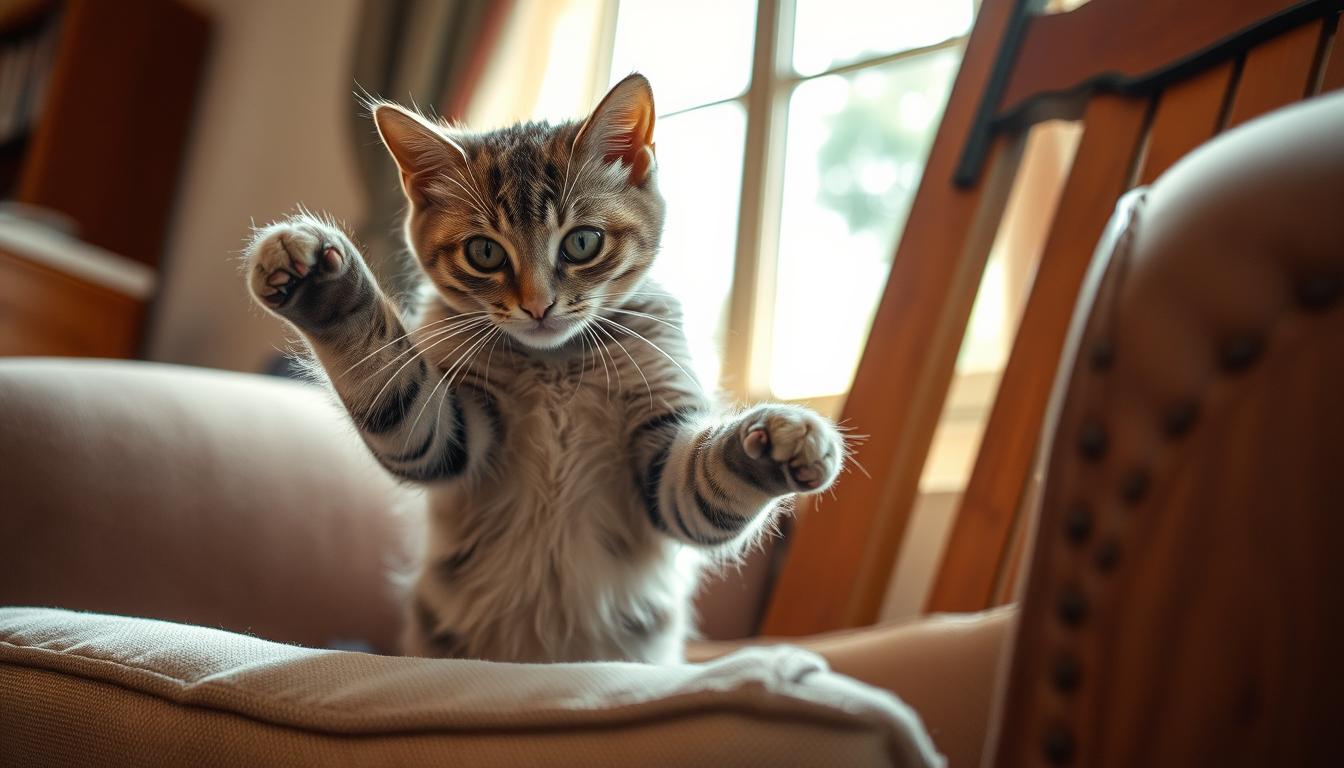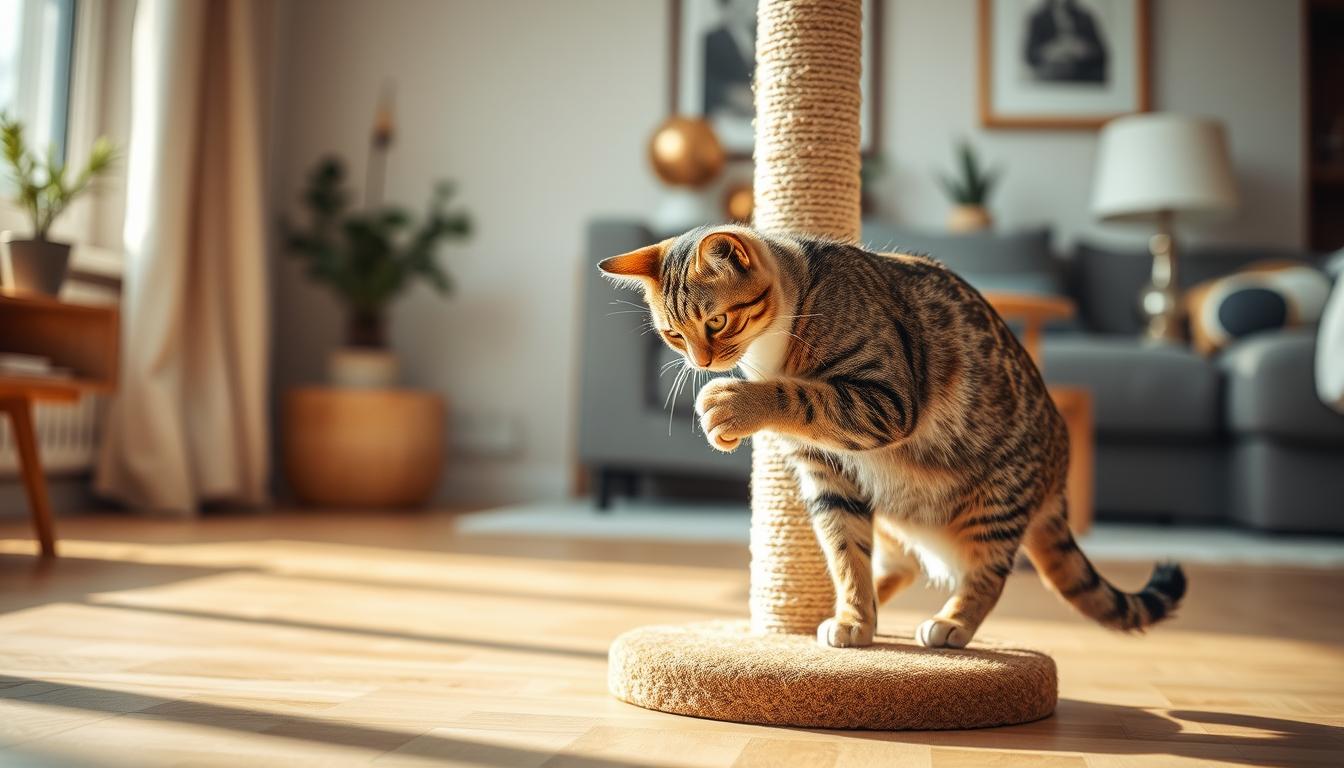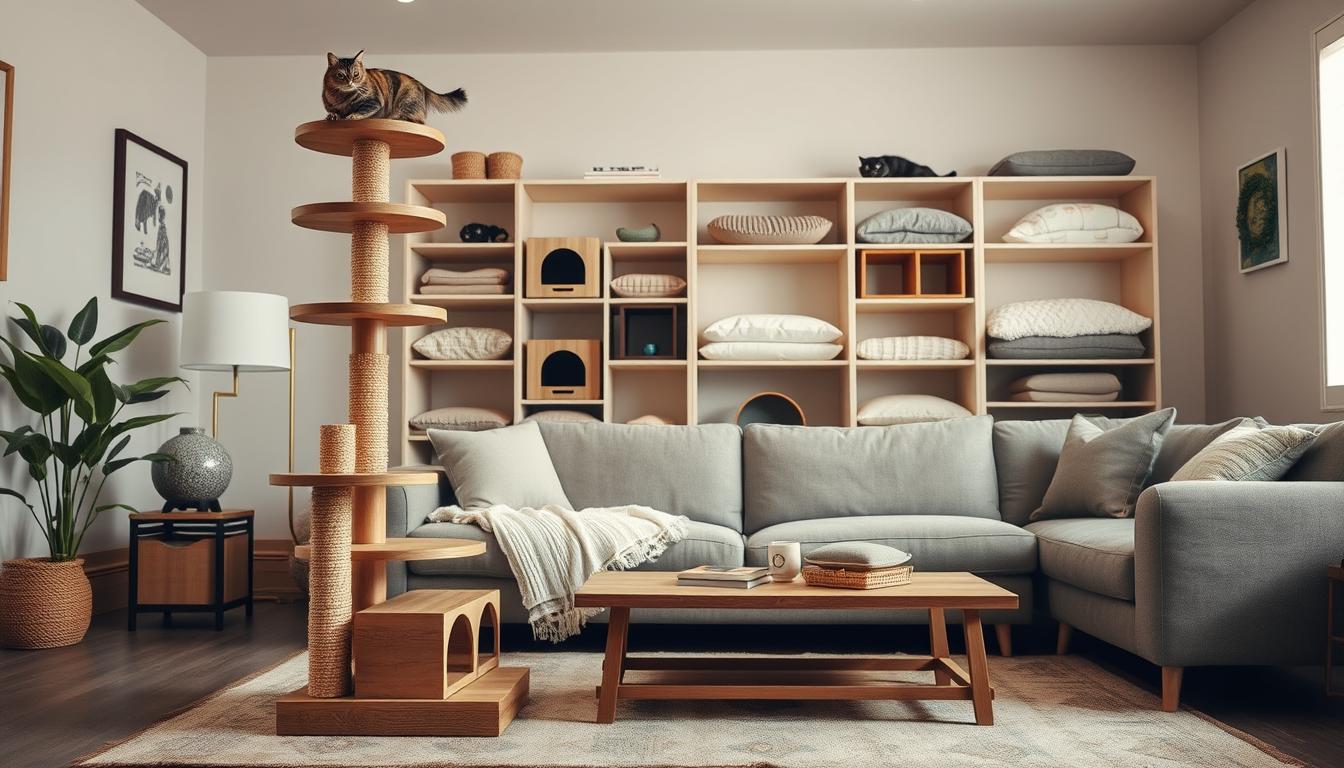Tips for Teaching Your Cat Not to Scratch Furniture

He wants teach your cat not to scratch the furniture?
Advertisements
Understand that this behavior is natural, but it can be redirected. Cats use their claws to mark territory, stretch their muscles, and keep their nails healthy.
However, that doesn't mean your furniture has to suffer!
Many owners are frustrated when they see destroyed sofas and chairs, but the solution is to offer attractive alternatives. Scratchers strategically placed and simple techniques can save your decor.
In this article, you will discover how to protect your home without repressing the pet's instincts.
Advertisements
From choosing the ideal model to using tools like catnip and attractant sprays, all the tips are practical and adaptable.
With patience and consistency, it's possible to maintain harmony between your furniture and your companion's well-being. Shall we begin?
Why do cats scratch furniture? Understand the behavior
Have you ever wondered why felines have this habit?
Scratching is an instinctive action, essential for your health and communication.
In the paws, they have glands that release pheromones when pressing on surfaces, marking their territory invisibly.
Additionally, the movement helps to sharpen the claws and remove dead layers. It's like a natural "manicure"!
In the nature, you animals They use tree trunks for this and at home, furniture becomes an accidental substitute.
++ How to Teach Your Dog to Stay Home Alone
Domestic cats seek out textures similar to tree bark, such as sisal or rope. If they can't find them, sofas and curtains become targets.
Punishments don't work, because the behavior is biological. The secret is to offer appropriate alternatives.
Remember: this instinct of mark territory and take care of claws is a vital part of feline life. Understanding this is the first step to protecting your furniture without frustrating your pet.
How to teach your cat not to scratch furniture
Transforming instinctive habits requires smart strategies. The secret is to make them scratching posts more attractive than furniture.
Start by placing these items near your cat's favorite spots.

Use catnip or valerian to make the pet become interested in the new object.
These herbs release aromas that pique your curiosity. Within a few days, your cat will associate the scent with the right place to sharpen its claws.
For already scratched furniture, apply double-sided tape. The sticky texture is unpleasant for sensitive paws. “Cats learn quickly when the environment guides them naturally”, explains feline behavior specialist.
See also: Tips for Socializing Your Puppy with Other Animals
When you catch the animal in the act, calmly redirect it to the scratching post.
Never yell or punish. Offer a treat when he uses the correct spot. Positive reinforcement creates lasting associations.
Patience is essential in this process. Some felines adapt in weeks, others take months. Stay consistent, and you'll soon see results.
For more tips, check out this complete guide on the topic.
Regular nail trimming also reduces damage. Use special clippers and trim nails every 15 days. If necessary, seek veterinary advice the first few times.
Creative alternatives to protect your furniture
Protecting your furniture can be simpler than you think. With smart solutions, you can keep your furniture intact and your feline happy.
It all depends on the form how it adapts to the environment.

Choose one sofa smooth leather is a great strategy.
This material is less susceptible to scratches and easy to clean. If you prefer fabrics, protective covers are effective allies.
See more: Tips for Dealing with a Skittish Cat
Create "pet furniture" with wooden structures and sisal rope. They mimic tree trunks, appealing to their natural instincts.
Place these items in the places kitty's favorites.
| Sofa Material | Advantages | Disadvantages |
|---|---|---|
| Leather | Durable, easy to clean | It can be hot in the summer |
| Microfiber | Soft, less visible damage | Requires frequent cleaning |
| Sisal (covers) | Attracts to scratch in the right place | Needs to be replaced periodically |
Natural fiber rugs are another option. They serve as an alternative to furniture and enrich the space. Add shelves and tunnels to keep your pet entertained.
Customize scratching posts with the smell of the animal. Rub a cloth on its cheeks and then on the object. This creates familiarity and encourages use.
Natural repellents, such as citronella, help keep pets away from places prohibited. Spray catnip spray on scratching posts to reinforce the correct habit.
Things Simple things make all the difference. With patience and creativity, your home will be protected from form harmonious.
Tips for Stubborn Cats: Redirecting Attention
Some felines are more resistant to habit changes. If your pet insists on ignoring the scratching posts, don't give up!
Redirect to attention his could be the key to success.
Caring for your cat's claws
Keep the claws Keeping your feline's fur healthy is essential for their well-being. Regular trimming prevents damage to furniture and accidental injuries. But be careful: the wrong technique can cause pain or bleeding.
Cut only the tip (maximum 2 mm) to avoid reaching the internal vein. Use specific cutters for animals ordinary scissors can chip the nails.
If you do not feel safe, ask the veterinarian a demonstration.
Watch for signs that it's time to trim:
• Claws stuck in fabrics or carpets.
• Clicking noise when walking.
• Difficulty moving around.
| Tool | Advantages | Care |
|---|---|---|
| Guillotine Cutter | Accuracy for nails small | Requires correct alignment |
| Scissor Cutter | Suitable for claws thick | Press slowly to avoid cracking. |
| Electronic Sandpaper | Gradual and safe wear | Noise can scare some pets |
THE time ideal time between cuts varies from 2 to 3 weeks.
To animals For those who reject the process, silicone covers are a temporary alternative. Rough surfaces, such as sisal scratching posts, help with natural wear and tear.
"Older cats or cats with dark nails require extra attention. Always illuminate the area to visualize the vein before cutting."
Patience and rewards make the experience positive. Offer a treat after each session to create positive associations. With these precautions, your curtains and sofas will be protected!
Conclusion
Teaching your cat not to scratch furniture requires time and understanding.
Remember: strategic scratching posts, environmental enrichment, and claw care are pillars of success.
Adapt the tips to your feline's profile. Some respond quickly to catnip, others prefer vertical surfaces. patience is your greatest ally on this journey.
With consistency, your home will remain intact and the pet will be satisfied. The harmonious coexistence between furniture and a happy cat it's simpler than it seems!
